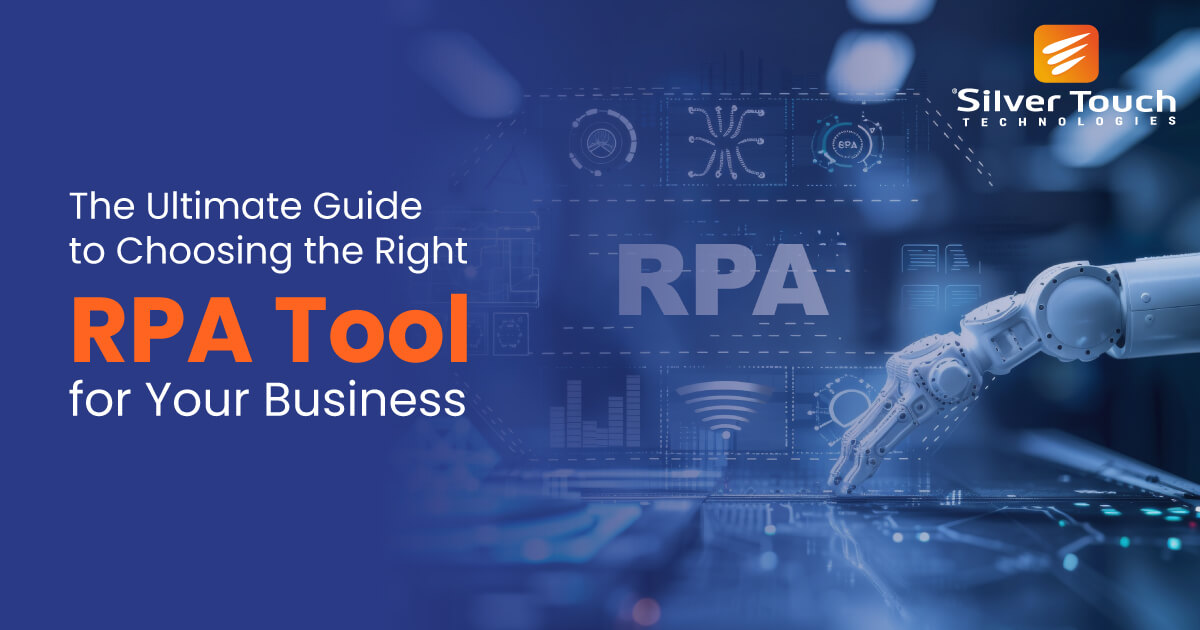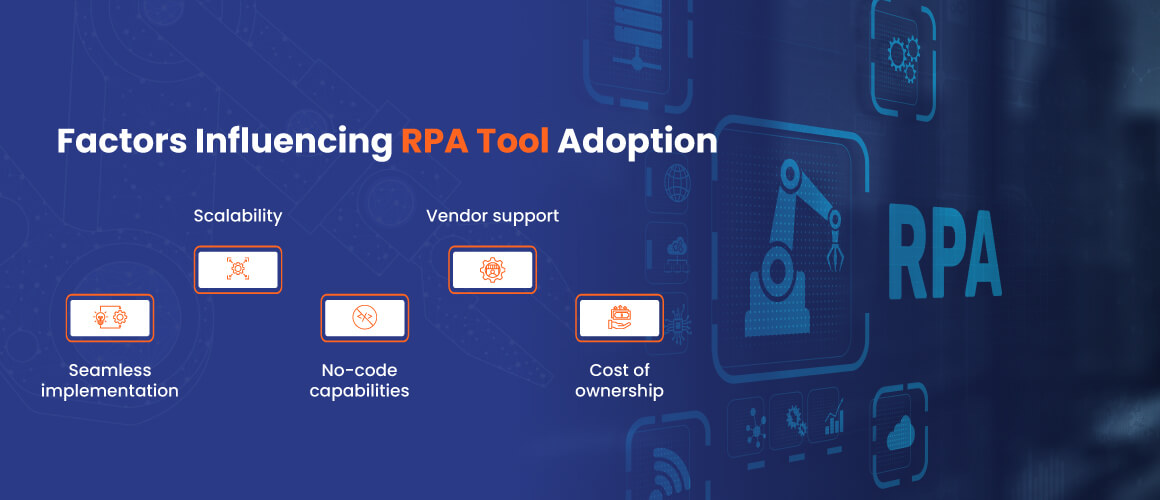The Ultimate Guide to Choosing the Right RPA Tool for Your Business

Since the past few years, as businesses have developed exponentially and experienced a fast-changing landscape, automation has become an integral part of their growth. Today, companies do not just worry about getting the job done. They want to accomplish things faster than before with ultimate accuracy and efficiency.
Technological advancement has made it possible to automate repetitive and mundane tasks while reducing resource engagement and mitigating errors and risks without compromising efficacy. One such ground-breaking solution is RPA or robotic process automation solutions. It is a new-age business management and automation solution leveraging artificial intelligence and machine learning to revolutionize organizational operations at multiple levels.
According to market predictions, the global RPA market is estimated to be $11 billion by 2027, growing at a CAGR of 34% from 2020 to 2027. Previously, in 2019, it was $1.40 billion. The projected figures indicate that more companies are going to integrate RPA solutions in their businesses for increased efficiency and better automation, ultimately leading to the best outcomes.
Now, the burning question is how to choose the right RPA tool that fits into your business seamlessly and what factors to consider while making a decision. This article gives you an insight into all the essential pointers for making an informed decision and giving your business the automation boost.
Exploring the different RPA tool types:
The first step to choosing an RPA tool is to understand its types and what are its use cases. RPA tools can be divided into the following categories: attended vs. unattended RPA
Attended RPA
In this case, the bot acts as a virtual assistant and has to be triggered by a user or a predetermined action to complete a task. There is some amount of human interaction. Attended RPA solutions are usually used when there is a real-time interaction with a customer and users.
Some use cases of attended RPA tools:
- Customer executives use attended RPA to retrieve customer information and process orders.
- HR managers use attended RPA to generate onboarding letters, complete background checks and provide essential employee information.
- Accountants utilize RPA for generating invoices, verifying information and processing orders.
Unattended RPA
As the name suggests, unattended RPA solutions work independently without any human intervention. The bot follows a set of rules and processes to complete a task.
Some use cases of unattended RPA tools:
- Entering data from different spreadsheets, PDFs, and other databases into new systems.
- Deploying software updates, new features and software maintenance.
- Repetitive tasks, such as, data entry are prone to error, omission or duplication. RPA tools ensure that each task is completed with utmost accuracy, with little to no human intervention. Therefore, the company can achieve higher efficiency levels with RPA tools.
- RPA deployment does not require hefty investments. However, it helps in reducing redundant operational costs through automation. The company can also utilise its resources for productive tasks. Hence, RPA helps cost saving and generates better ROI.
- RPA is the first step towards achieving total digital transformation. It starts with advanced bots enabling automation and breaking down complex tasks into simple, achievable bits. Your business can embark on a life-long journey of better automation and digital transformation by implementing RPA solutions.
- RPA tools enable employees to ditch repetitive tasks and focus on more complex customer issues. This, in turn, helps the organization enhance customer experience through better engagement and communication.
So what should you choose? How about exploring the best of both worlds-hybrid RPA tools? These tools comprise characteristics of both RPA tool types discussed above. A hybrid RPA tool can be used to accomplish structured and unstructured tasks through one system. Here the RPA selection will be based on the tasks you want to accomplish through automation.
How do RPA solutions transform your business?
Integrating RPA solutions in your business is a significant financial and operational decision. Hence, it is vital to understand how your business can benefit from deploying RPA tools. Here are four ways robotic process automation tools transform the company:
Factors determining the RPA tool choice

There are some factors very niche to the company influencing the choice of RPA tools. However, there are some common and broader aspects which every company must consider before selecting an RPA tool. Here is a list of 5 such factors:
Seamless implementation
The new RPA solutions should be non-invasive and easily integrated with the existing systems. The tool’s smooth integration capability will reduce downtime and ensure a seamless transition.
Scalability
Modern business solutions need to be scalable and RPA is not an exception. Multiple RPA bots should be able to work in tandem to accomplish a great volume of tasks. The scope of usage should also be expandable for future uses.
No-code capabilities
As systems are evolving, tech experts have identified the need for low-code or no-code solutions. RPA solutions with low-code capabilities offer endless possibilities for tech novices and small or mid-level companies to fully unlock the automation powers minus the complexity of codes.
Cost of ownership
Implementing RPA solutions requires some upfront investments. From vendor payments and third-party RPA integration costs to support and maintenance fees, there are several costs associated with selecting RPA solutions.
Vendor support
Without a robust and RPA-experienced internal IT team, RPA management can become a hassle. However, adequate vendor support from a reliable RPA provider ensures technological advancement and smooth RPA deployment.
Elevate the RPA implementation experience with the right RPA partner
Selecting the right RPA solutions is not enough to ensure success in business automation. Choosing an experienced RPA partner can make or break the implementation process. Silver Touch Technologies helps organizations build robust and dynamic RPA solutions by considering the various company needs. The team of experts at Silver Touch Technologies have collaborated with different organizations from various sectors and closely encountered their automation challenges, pain points and business needs. Therefore, they are equipped with vast industry knowledge for developing the best robotic process automation solutions perfectly aligning with the business goals and needs.
FAQs
RPA or robotic process automation solutions are modern business tools that empower organizations to achieve the highest levels of operational efficiency through process automation. It is important for operating in a fast-paced, evolving business landscape that values quality, speed, efficacy and accuracy.
There is a list of factors that help you select the best RPA solution. Some factors to look at are ownership cost, scalability, third-party integration, ease of implementation and use, vendor support and level of technical advancement.
You can measure the cost and time saved after implementing the RPA bots. You can also check how much the efficiency and accuracy have increased at the organization after the RPA investment to measure the ROI.




